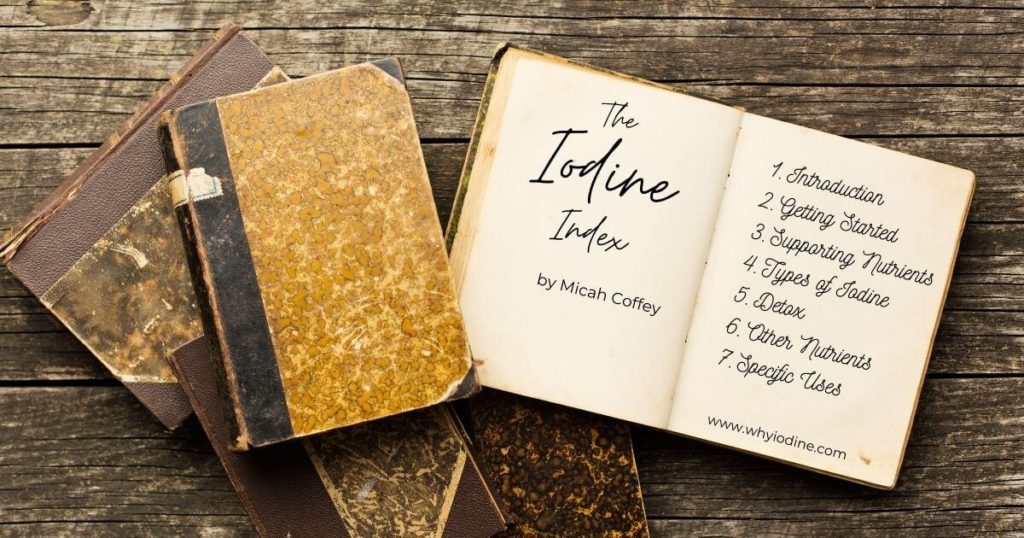
There is a method floating around the internet for a long time, and even several books talking about applying a small patch of iodine to our skin and judging how iodine deficient we are depending how quickly we absorb it. There are so many factors to this.
Something to keep in mind. Even a single drop of weak Lugols is enough iodine to cause a very toxic person to start detoxing. There are other commonly recommended supporting nutrients with the iodine protocol. If someone is ill or fatigued, they may want to at least eat some foods containing these nutrients before exposing their cells to rather larger amounts of iodine. Kelp can be a decent alternative before we get into Lugols or other concentrated iodine solutions.
So, the idea is that people applied Lugols to their skin and it went away in X hours, which means their body did or didn’t need iodine. Although this is a great way to take our first step towards a better life with iodine, it doesn’t really show us anything useful. If I were here to sell you iodine, I would go “omg, it soaked up that fast! wow! here, buy 10 bottles!”. But instead I’m going to attempt sharing my opinion, which is that we’re all low on iodine to some degree, whether we soak it up fast or not.
Ever tried watering a very dry house-plant? The water beads up on top and most of it can overflow and spill everywhere. Does this mean the plant doesn’t need water? Nope, the exact opposite. It’s dried out so much, that the soil has formed some sort of shell that repels the water. Nature operates in similar ways, so there is a good chance our body does this in various ways. Maybe its not as simple as the liquid running off vs being soaked up as in the plant example, but it’s also not as simple as the rate in which the color of a random liquid fades against a random person’s random skin color and texture.
Which strength iodine are we judging this with, because that has a lot to do with how quickly it will seem like our skin has completely absorbed it. 5% is twice as dark as 2%, and some people use even stronger blends. People buy Lugols from random people around the globe, and some of these people interpret the recipe/math differently and create different strength blends. Over time as the product ages, it becomes lighter colored as well. This means people could use what they assume is the same colored product, which is instead a completely different color, and assume one was absorbed much quicker than the other’s.
How much liquid is being used, is only a thin layer applied to the skin, or should the liquid bead up?
Do I blot the excess?
What if I have super light or super dark skin?
What if I’m super pale?
What if I have lotion, oil, soap residue or self-tanner on my skin?
Can I shower while waiting?
What if I am very active in a humid climate vs sedentary in the cold?
What about hydration level?
What if I’m loaded with other halides that may repel iodine and cause it to be urinated?
There are a lot of other variables, like how often we poop etc, but I figure you kinda get the hint at this point. Another interesting aspect I like to point out is how I can put gasoline on my skin, and it will eventually be absorbed and evaporate, but I doubt that implies that I am low on gasoline.
I think the 24-hour urine loading test also has flaws.
If this is confusing or you are looking for more answers, attempt proving to yourself that you are iodine deficient. Look up the total amounts of iodine our body stores in various organs and tissue, and try to verify that we are getting enough to fulfill those requirements. Our RDA is just enough to avoid goiter. But is avoiding a balloon in our neck enough to be sufficient, or just enough to avoid causing our body to scream for help? $3 dollars of gasoline might be enough to turn off the empty light, but do we stop for $3 of fuel all day or fill up the reserves?
Iodine has been removed from our diet while our diet and environment have been loaded with anti-iodine compounds. It’s not rocket math.
